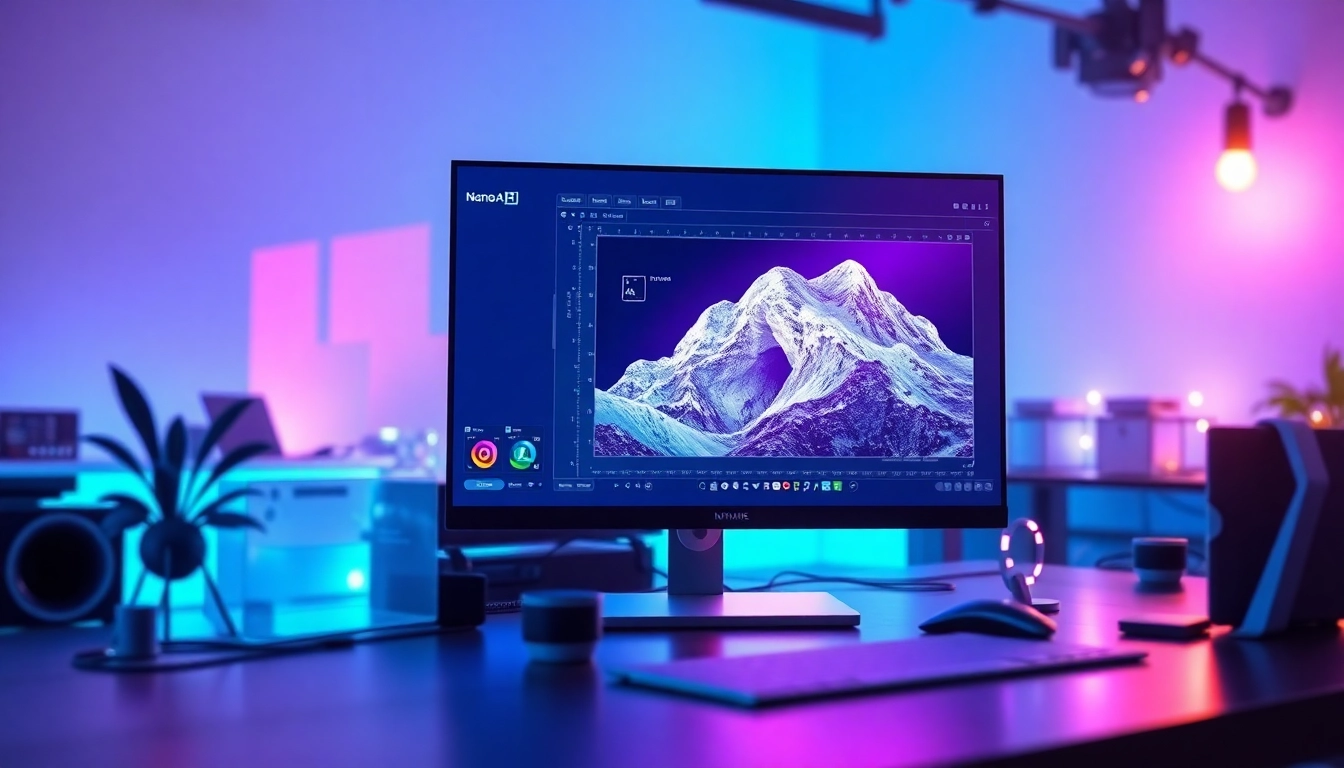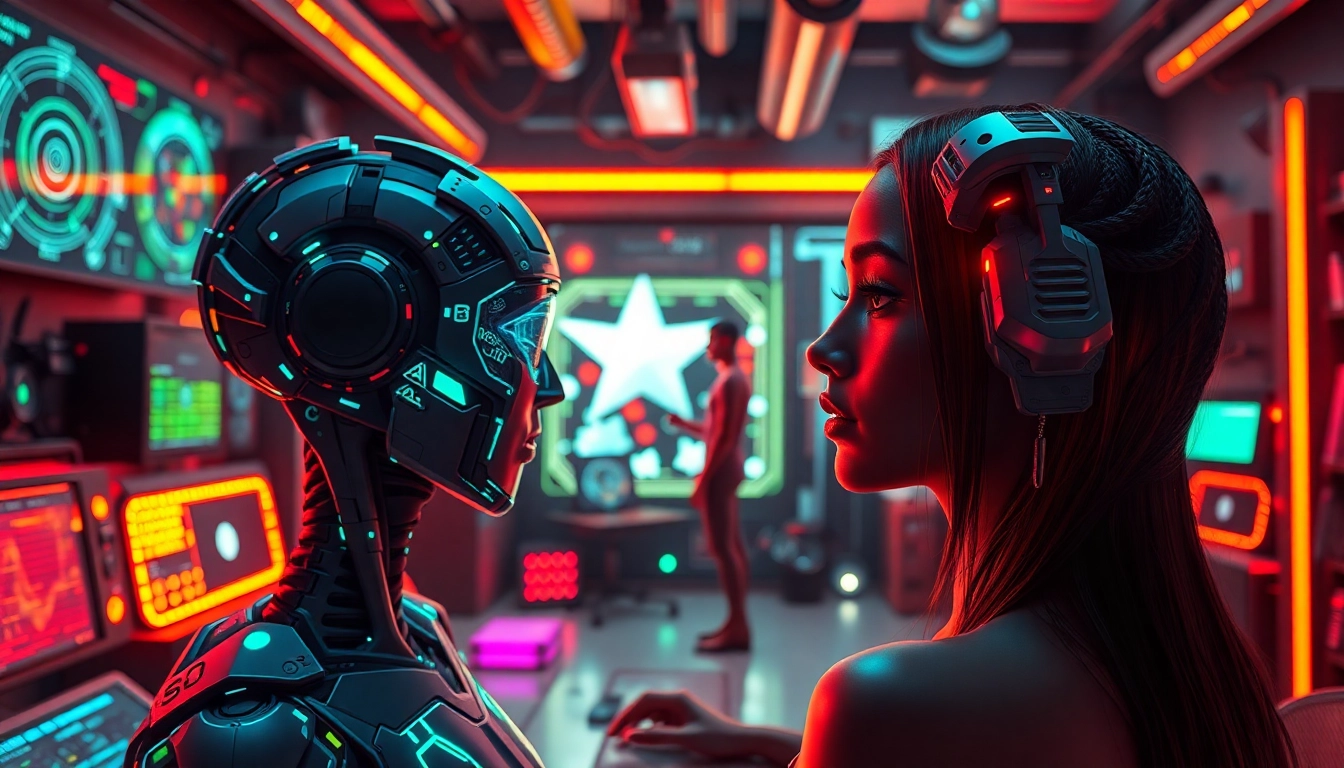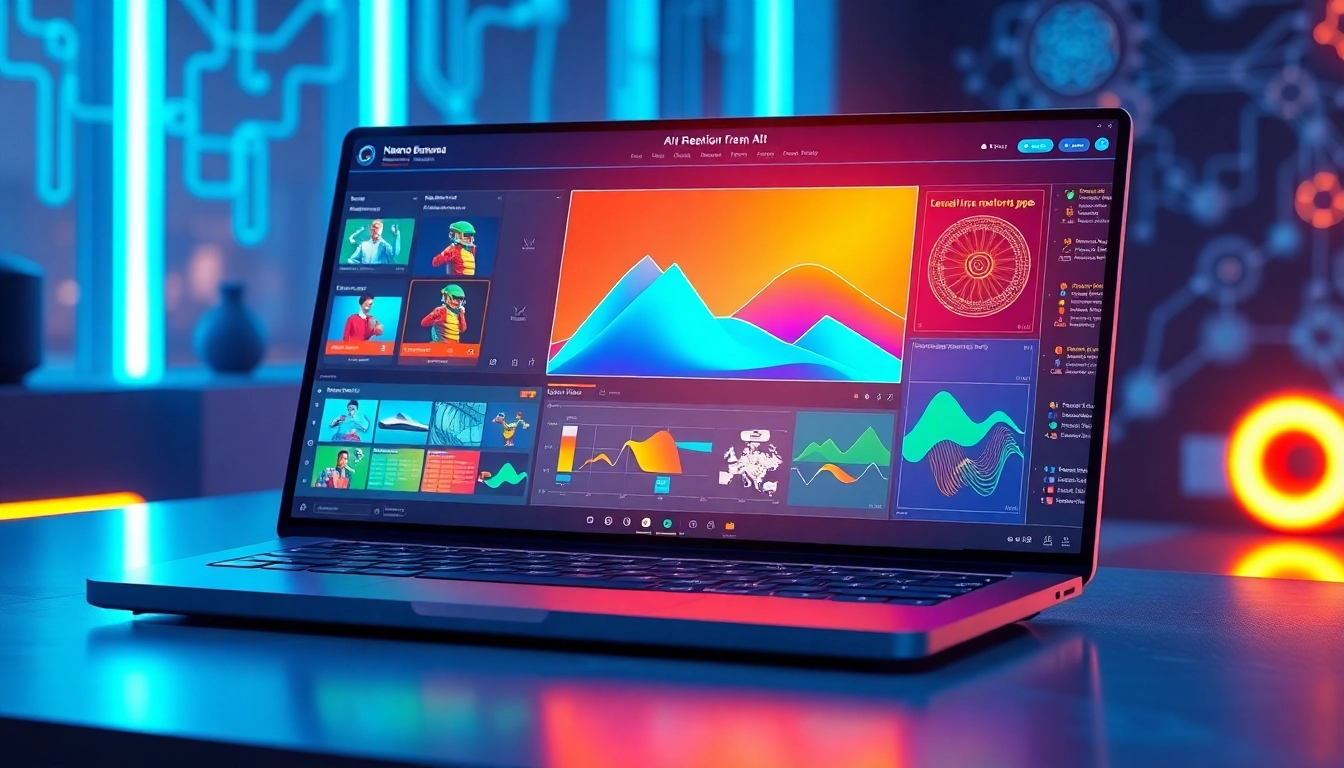Revolutionizing Visual Creativity: How Nano Banana AI Is Transforming Image Editing
In an era where artificial intelligence continues to redefine the boundaries of technology and creativity, a new player has emerged that promises to shift the paradigm entirely. Known as nano banana ai, this cutting-edge platform claims to outperform all existing image editing tools through its unparalleled advanced reasoning capabilities. Unlike traditional editing software that relies primarily on straightforward manipulations, Nano Banana AI integrates deep contextual understanding, perfect consistency, and three-dimensional spatial awareness, making it a true game-changer in the world of visual arts and digital design.
Understanding Nano Banana AI and Its Distinctive Edge
What is Nano Banana AI?
Nano Banana AI is not just another image editing tool; it embodies a comprehensive AI system designed to understand images at a human-like level. Its core technology is built on the premise that effective visual editing isn’t merely about changing pixels — it’s about grasping the context, intent, and nuances behind every image. This platform claims to leverage advanced reasoning to interpret complex editing requests, whether it’s swapping backgrounds seamlessly, maintaining character consistency, or adjusting perspectives in 3D space, all while preserving the integrity of the original scene.
According to recent reports and reviews, Nano Banana AI has been positioned as Google’s revolutionary AI image editor, leveraging its “advanced reasoning capabilities” to outperform competitors like Flux Kontext and Gemini 2.0 Flash. While these traditional tools offer basic image manipulation—such as cropping, color correction, or simple object removal—Nano Banana AI aims to understand the *why* behind each edit, ensuring the results are not only visually appealing but also logically coherent.
Core Features: Deep Reasoning and Contextual Comprehension
At the heart of Nano Banana AI’s innovation is its ability to reason about images in a manner akin to human cognition. This isn’t merely about pattern recognition; it involves complex understanding of spatial relationships, object permanence, and contextual cues. For example, when a user requests to change a person’s hair color in a photograph, Nano Banana AI doesn’t just alter pixels at random; it recognizes the person’s entire figure, understands the lighting and shadows, and ensures the change looks natural and consistent across the entire image.
Moreover, its deep contextual understanding allows it to interpret ambiguous instructions more effectively. If asked to “make the scene more lively,” the AI can analyze the existing elements, identify areas for enhancement—such as adjusting colors, adding subtle elements like sparkles or light effects—and execute these changes while maintaining overall harmony. This level of logical reasoning and contextual awareness is what sets Nano Banana AI apart from conventional editing tools that often produce inconsistent or unnatural results when given complex tasks.
Comparison with Existing Image Editing Tools
Traditional Tools: Flux Kontext and Gemini 2.0 Flash
To fully appreciate Nano Banana AI’s capabilities, it’s essential to compare it with established competitors. Flux Kontext and Gemini 2.0 Flash are notable examples of AI-driven image manipulation tools. These platforms excel at straightforward edits like background removal, color adjustments, or applying predefined filters. They have made significant progress in automating routine tasks, but their underlying architectures are primarily pattern-based, lacking the depth of reasoning needed for complex, nuanced edits.
Flux Kontext, for instance, uses machine learning models that can recognize objects and perform basic manipulations. However, it often struggles with maintaining consistency when multiple edits are applied or when requests are more abstract. Gemini 2.0 Flash, Google’s own advanced image model, offers impressive features such as object swapping and perspective adjustments, but even it faces limitations in understanding intricate contextual cues or maintaining element integrity across multiple edits.
Why Nano Banana AI Surpasses Its Competitors
Nano Banana AI claims to bridge these gaps with a remarkable accuracy rate of 95-99%, compared to the 20-70% typical of its rivals. Its advanced reasoning engine allows it to comprehend not only the visual elements but also the *intent* behind user requests. This results in edits that are more precise, contextually appropriate, and visually consistent.
For example, when asked to change the weather in an outdoor scene from sunny to rainy, Nano Banana AI considers the natural lighting, reflections, and shadows, ensuring that the new weather conditions are convincingly integrated. Similarly, it can handle complex object interactions—such as editing a person’s pose while keeping their clothing and facial expressions consistent—better than traditional tools, which often produce mismatched or distorted results.
Technical Innovations Driving Nano Banana AI
Deep Contextual and Spatial Understanding
One of the most groundbreaking aspects of Nano Banana AI is its ability to understand the spatial relationships within an image. Unlike standard AI models that process images as flat pixel arrays, Nano Banana AI incorporates 3D spatial awareness, allowing it to interpret depth, perspective, and object placement with remarkable accuracy.
This capability enables advanced edits like changing the angle of a subject, adding virtual objects into a scene, or aligning multiple elements seamlessly. For instance, in a photograph of a cityscape, Nano Banana AI can add a new building or vehicle with proper perspective, making the insertion indistinguishable from the original scene.
Logical Reasoning and Decision-Making
Beyond spatial awareness, Nano Banana AI employs logical reasoning algorithms to evaluate the context of each edit. This involves analyzing the relationships between objects, understanding physical constraints, and predicting the outcome of modifications. Such reasoning ensures that edits respect natural laws—like gravity or lighting—resulting in more realistic images.
This reasoning ability is particularly useful in complex tasks such as reconstructing missing parts of an image, restoring damaged photos, or creating composite scenes where multiple elements interact convincingly.
Consistency and Memory
Another key innovation is the AI’s capacity for maintaining consistency across multiple edits. When a user applies a series of changes—like altering a character’s hairstyle, then changing their outfit—Nano Banana AI remembers prior modifications and ensures they are coherent throughout the process. This “memory” function reduces errors and saves time, especially in large-scale projects.
Furthermore, its ability to recall detailed features—such as facial features, clothing patterns, or background elements—avoids the common pitfalls of other tools that reset or forget previous edits, leading to disjointed or inconsistent results.
Applications for Different User Segments
Casual Creators and Social Media Enthusiasts
For everyday users, Nano Banana AI offers an intuitive interface that simplifies complex editing tasks. Whether it’s enhancing vacation photos, creating fun memes, or designing eye-catching social media posts, casual creators benefit from the AI’s ability to produce professional-quality edits effortlessly.
Its advanced reasoning enables users to implement creative ideas without technical expertise. For example, changing backgrounds, adding animated effects, or fine-tuning facial expressions becomes straightforward, empowering users to produce content that stands out in a crowded digital space.
Professional Photographers and Visual Artists
For professionals, Nano Banana AI provides a powerful toolset for high-precision editing. Photographers can leverage its deep contextual understanding for retouching, compositing, and restoration work, significantly reducing manual effort and increasing productivity.
Visual artists and graphic designers can utilize its 3D spatial awareness to create complex compositions or realistic mockups. The AI’s ability to reason about lighting and perspective facilitates seamless integration of multiple elements, enabling artists to realize their visions with unprecedented accuracy.
Enterprise-Level Businesses and Creative Agencies
Large organizations and creative agencies stand to gain from Nano Banana AI’s scalability and robustness. Its enterprise plan offers integration options, custom workflows, and API access, allowing seamless incorporation into existing production pipelines.
In marketing, advertising, and media production, the AI’s high accuracy and consistency ensure brand standards are maintained across campaigns while significantly reducing turnaround times. Its capacity to handle large volumes of images reliably makes it an invaluable asset for high-stakes projects requiring perfection.
The Future of AI in Visual Arts: Opportunities and Ethical Considerations
Transforming Creativity and Productivity
Nano Banana AI exemplifies the future of AI-powered creativity—where machines do not merely generate images but *understand* and *reason* about visual content. As AI continues to evolve, we can expect even more sophisticated tools that augment human creativity, allowing artists to focus on conceptual ideas while automation handles technical complexities.
The potential for such AI systems extends beyond entertainment and commercial applications. Fields like medical imaging, architectural visualization, and scientific research stand to benefit from AI’s ability to analyze and manipulate complex visual data with precision.
Ethical Implications and Responsible Use
However, this technological leap raises important ethical questions. The ability to create hyper-realistic images raises concerns about misinformation, deepfakes, and unauthorized use of likenesses. Ensuring transparency, digital watermarks, and proper usage guidelines will be critical as these tools become more accessible.
Moreover, there’s a need to address copyright and ownership issues, especially when AI-generated content is used extensively in commercial settings. Developers and users must collaborate to establish ethical standards that balance innovation with responsibility.
Conclusion: Why Nano Banana AI Represents a Paradigm Shift in AI-Powered Creativity
In summary, Nano Banana AI stands at the forefront of AI-driven image editing, offering capabilities that go far beyond traditional tools. Its advanced reasoning, deep contextual understanding, and 3D spatial awareness enable it to perform complex, nuanced edits with unparalleled accuracy and consistency. Whether for casual users, professional artists, or large enterprises, the platform’s versatility and performance make it a compelling choice.
As the technology continues to mature, it’s clear that Nano Banana AI is not just an incremental improvement but a true paradigm shift—redefining what is possible in visual creativity and positioning itself as the most intelligent and capable AI image editor available today. The platform embodies the vision that true AI progress isn’t merely about generating pretty pictures but about creating systems that *think* about images in ways that mirror human cognition. This approach promises to unlock new levels of innovation, efficiency, and artistic expression in the digital age, heralding a future where AI and human creativity work hand in hand to reshape the visual landscape.
For those eager to explore this revolutionary technology, keep an eye on the ongoing developments and updates. As Google continues to push the boundaries with initiatives like google nano banana, the possibilities for AI in visual arts are expanding at an unprecedented pace. The era of truly intelligent image editing is here, and Nano Banana AI is leading the charge into a new frontier of digital creativity.



